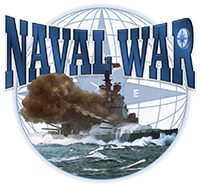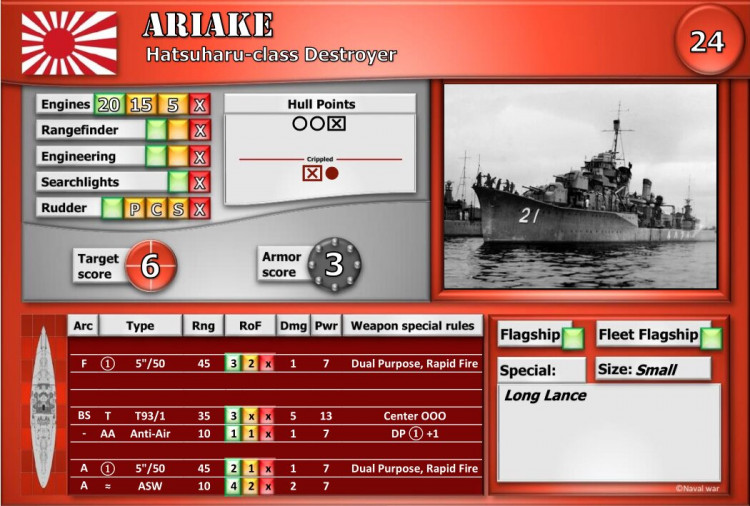Hatsuharu-class Destroyer
Description
Ships in class: 6
| Ship | Shipyard | Laid down | Launched | Completed | Fate | |
|---|---|---|---|---|---|---|
| 初春 | Hatsuharu | Sasebo Naval Arsenal | 14 May 1931 | 27 February 1932 | 30 September 1933 | Sunk in action, 13 November 1944 |
| 子日 | Nenohi | Uraga Dock Company | 15 December 1931 | 22 December 1932 | 30 September 1933 | Sunk in action, 5 July 1942 |
| 若葉 | Wakaba | Sasebo Naval Arsenal | 12 December 1931 | 18 March 1934 | 31 October 1934 | Sunk in action, 24 October 1944 |
| 初霜 | Hatsushimo | Uraga Dock Company | 31 January 1933 | 4 November 1933 | 27 September 1934 | Mined and sunk, 30 July 1945 |
| 有明 | Ariake | Kawasaki Kobe Shipyard | 14 January 1933 | 23 September 1934 | 25 March 1935 | Sunk in action, 28 July 1943 |
| 夕暮 | Yūgure | Maizuru Naval Arsenal | 9 April 1933 | 6 May 1934 | 30 March 1935 | Sunk in action, 20 July 1943 |
The Hatsuharu-class destroyers were designed to accompany the Japanese main striking force and to conduct both day and night torpedo attacks against the United States Navy as it advanced across the Pacific Ocean, according to Japan's naval strategic projections. They were to be armed much as the Fubuki class despite displacing only 1400 tons compared to the 1700 tons of the earlier destroyers. Furthermore, their fire control systems were to be more modern than the older systems and suitable for anti-aircraft use. This required the gun turrets to be modified for high-angle fire, which also meant more powerful motors to traverse and elevate the guns more quickly to engage high-speed aircraft. The torpedo launchers were to be given a protective shield to allow for use in heavy weather and to protect against splinter damage.

